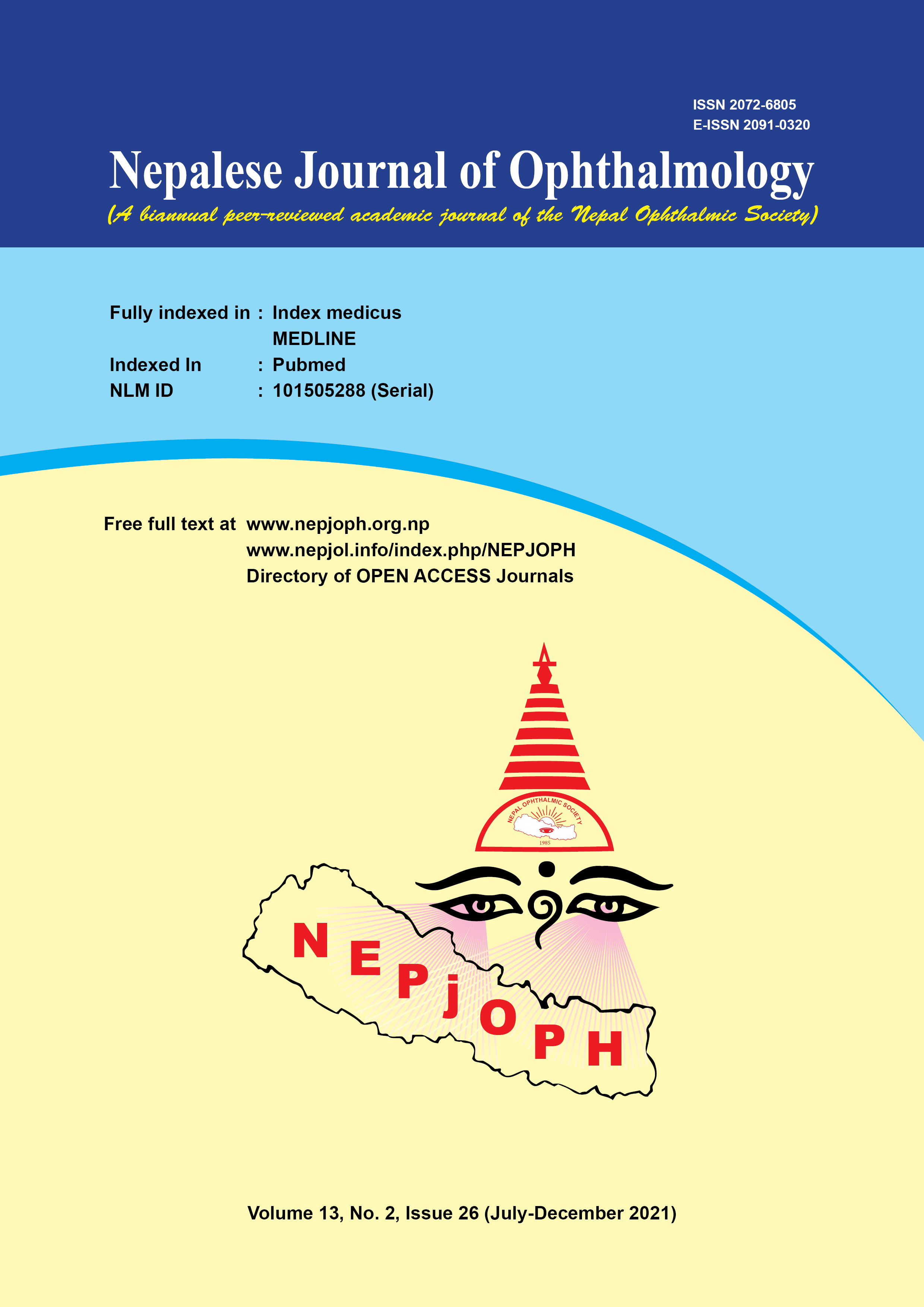Psychological Reactions among Staffs of a Tertiary Eye Hospital in Eastern Nepal during COVID-19 Pandemic
DOI:
https://doi.org/10.3126/nepjoph.v13i2.32887Keywords:
Anxiety, COVID-19 pandemic, Depression, Eastern Nepal, Eye care service providers, Insomnia, StressAbstract
Introduction: Eye examination and different procedures performed in close contact with eye and face, put medical and non medical staff of an eye hospital at higher risk for COVID-19. This causes increased psychological burden. The objective of this study was to find out depression, anxiety, stress and insomnia among Mechi Eye Hospital staff.
Materials and methods: A web based cross-sectional study among Mechi Eye Hospital staff was done from 1st to 20th July 2020. Insomnia Severity Scale and DASS-21 were used.
Results: Out of 220, 190 (86.6%) participated, 63.2% were female and 61.05% were medical staff with an overall mean age of 31.1±8.4 years. Overall prevalence of anxiety, depression, insomnia and stress were 20.5%, 18.9%, 16.3% and 12.6% respectively and those were common in female with 63.9% (p value <0.02), 64.1% (p value 0.5), 58.4% (p value 0.2) and 100% (p value <0.01) respectively. Depression, anxiety and insomnia were common in the age group 30-39 years (50%, p value< 0.02), 20-29 years (56.4%, p value 0.1) and 20-29 years (70.9%, p value 0.8) respectively. Stress was common in 20-29 years and 30-39 years, 45.8% each (p value <0.03). Depression (75%, p value 0.2), anxiety (71.7%, p value 0.9) and stress (70.8%, p value 1.0) were common in medical staff. Insomnia was present in medical staff only (p value<0.01).
Conclusion: Mechi Eye Hospital staff had greater prevalence of psychological reaction than the national baseline during the pandemic which was more common in female, younger age and medical staff.
Downloads
Downloads
Published
How to Cite
Issue
Section
License
Copyright (c) 2021 Nepalese Journal of Ophthalmology

This work is licensed under a Creative Commons Attribution-NonCommercial-NoDerivatives 4.0 International License.
This license enables reusers to copy and distribute the material in any medium or format in unadapted form only, for noncommercial purposes only, and only so long as attribution is given to the creator.




